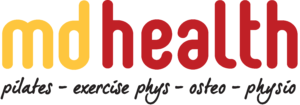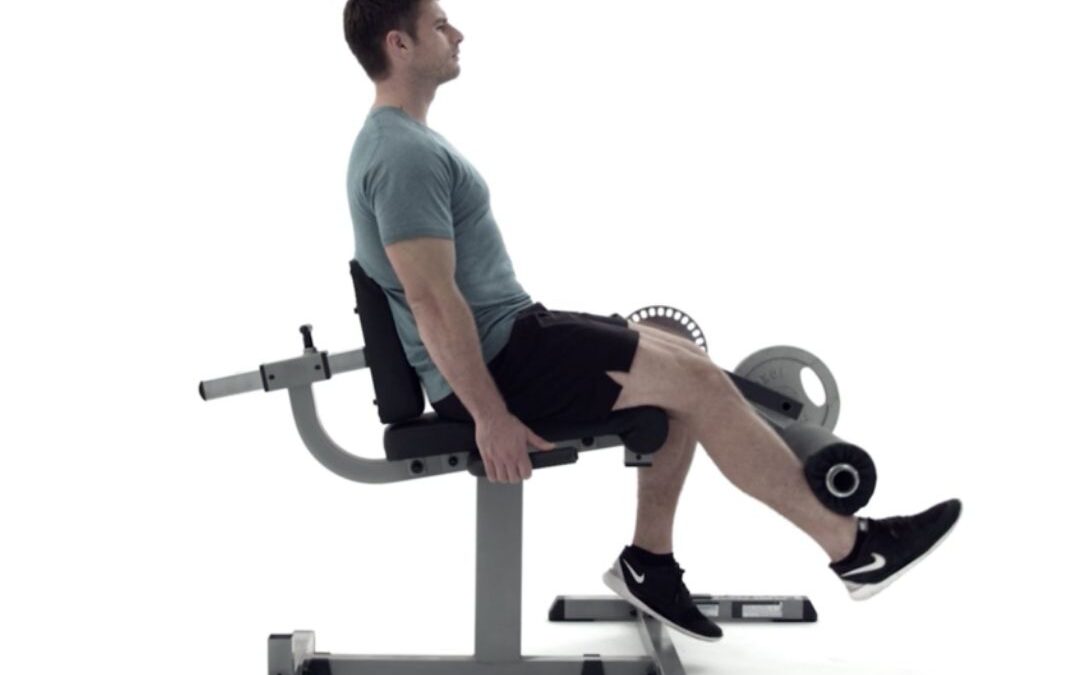Knee Extensions – A Great Exercise for Knee Pain
Having strong quadriceps muscles (thighs) is very important for helping with knee pain of any kind[1][2]. The quadriceps keep the knee stable under loads and are the main muscle group that extend the knee. In terms of patellofemoral joint knee pain (kneecap pain), knee extension exercises are often avoided – but why?
Why the hesitancy with knee extensions?
Some argue that knee extensions are not “functional” like other exercises (step ups, squats, lunges). There is also the argument that knee extensions place greater compressive loads on the kneecap, and therefore can irritate that area further[3]. But should we be avoiding knee extensions in favour of these “functional” exercises?
Definitely not! It has been proven that quadriceps strength is critical in predicting and preventing knee pain, particularly when dealing with kneecap/patellofemoral joint pain[4]. Knee extensions under lower loads, when performed as pain permits, can have even greater neuromuscular benefits than squats or lunges.
In fact, sometimes people with kneecap pain can be pain-free with knee extensions and not pain-free with lunges or squats!
More quadriceps recruitment?
Some evidence has even shown that open-chain exercises like knee extensions produce better activation of the medial part of the quadriceps muscle[5]. This part of the quadriceps (VMO) are important in stabilising the kneecap – so knee extensions may be important to include in a knee strengthening program to better involve the entire quadriceps group.
Knee extensions should be included in knee rehab!
As mentioned in previous articles by the MD Health team, strengthening exercises of the quadriceps and strengthening of the hips are critical to improving patellofemoral joint pain[6]. Knee Extension exercises can be included in this strengthening, to improve overall quadriceps strength and knee pain and function.
[1] Schmitt, L. C., Paterno, M. V., & Hewett, T. E. (2012). The impact of quadriceps femoris strength asymmetry on functional performance at return to sport following anterior cruciate ligament reconstruction. The Journal of orthopaedic and sports physical therapy, 42(9), 750–759. https://doi.org/10.2519/jospt.2012.4194
[2] Wang, H. J., Ao, Y. F., Jiang, D., Gong, X., Wang, Y. J., Wang, J., & Yu, J. K. (2015). Relationship between quadriceps strength and patellofemoral joint chondral lesions after anterior cruciate ligament reconstruction. The American journal of sports medicine, 43(9), 2286–2292. https://doi.org/10.1177/0363546515588316
[3] Powers, C. M., Ho, K. Y., Chen, Y. J., Souza, R. B., & Farrokhi, S. (2014). Patellofemoral joint stress during weight-bearing and non—weight-bearing quadriceps exercises. journal of orthopaedic & sports physical therapy, 44(5), 320-327.
[4] Chiu, J. K., Wong, Y. M., Yung, P. S., & Ng, G. Y. (2012). The effects of quadriceps strengthening on pain, function, and patellofemoral joint contact area in persons with patellofemoral pain. American journal of physical medicine & rehabilitation, 91(2), 98–106. https://doi.org/10.1097/PHM.0b013e318228c505
[5] Stensdotter, A. K., Hodges, P. W., Mellor, R., Sundelin, G., & Häger-Ross, C. (2003). Quadriceps activation in closed and in open kinetic chain exercise. Medicine and science in sports and exercise, 35(12), 2043–2047. https://doi.org/10.1249/01.MSS.0000099107.03704.AE
[6] Collins, N. J., Barton, C. J., van Middelkoop, M., Callaghan, M. J., Rathleff, M. S., Vicenzino, B. T., Davis, I. S., Powers, C. M., Macri, E. M., Hart, H. F., de Oliveira Silva, D., & Crossley, K. M. (2018). 2018 Consensus statement on exercise therapy and physical interventions (orthoses, taping and manual therapy) to treat patellofemoral pain: recommendations from the 5th International Patellofemoral Pain Research Retreat, Gold Coast, Australia, 2017. British journal of sports medicine, 52(18), 1170–1178. https://doi.org/10.1136/bjsports-2018-099397
Do you have any questions?
- Call us on (03) 9857 0644 or (07) 3505 1494 (Paddington)
- Email us at admin@mdhealth.com.au
- Check out our other blog posts here
Our clinical staff would be happy to have chat if you have any questions.



